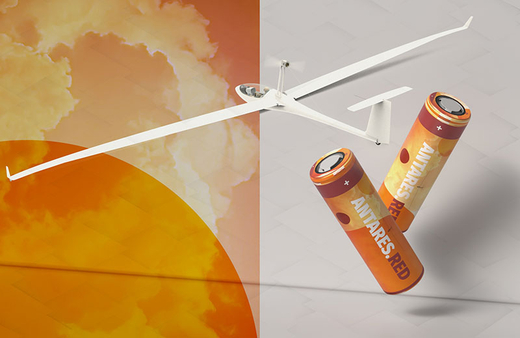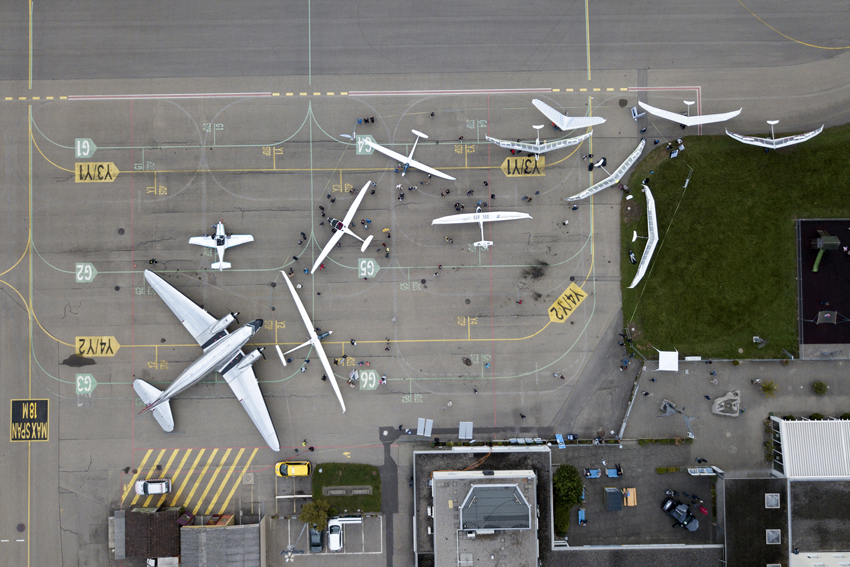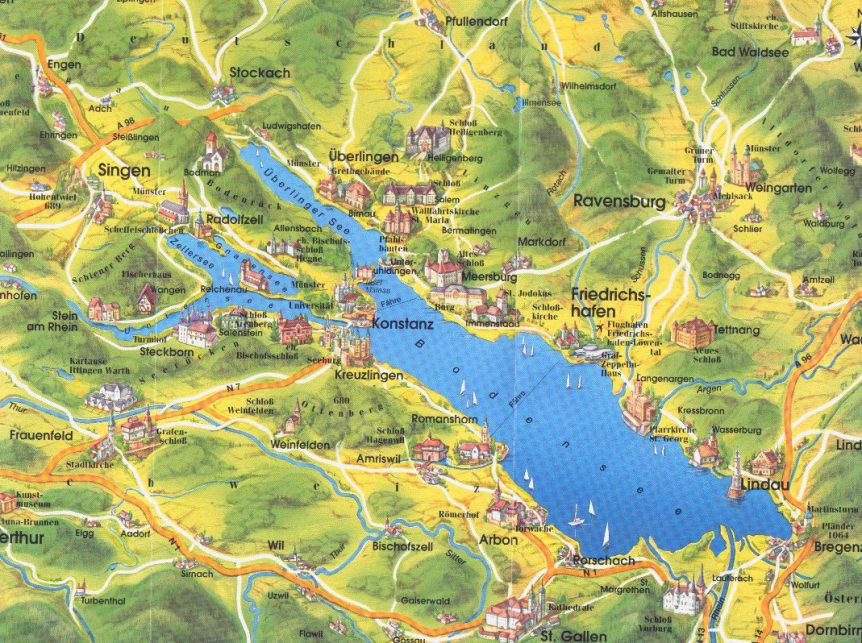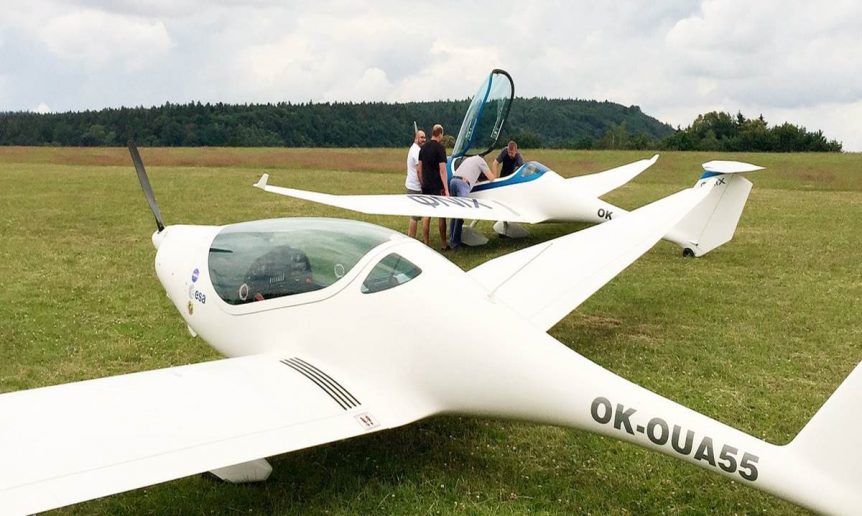Austria’s Diamond Aircraft launched its eDA40 last year, headed toward becoming “The first EASA/FAA (European Aviation Safety Agency/Federal Aviation Agency) Part 23 certified electric airplane with DC fast charging. Electric Power Systems’ DC fast charging system is capable of turning around a depleted aircraft in under 20 minutes.” Austria’s Diamond Aircraft has been developing environmentally responsible aircraft for the last several decades, starting with the hydrogen fuel cell-powered HK-36 in 2008. Diamond promoted its work with Boeing Phantom Works as emitting nothing more than waste heat and water vapor, demonstrating “technology that may result in cleaner APU’s (auxiliary Power Units) for commercial aircraft of the future.” Diamond went beyond that over the next decade, using the HK-36 as a testbed for various hybrid and electric power variants. In 2018, things had evolved to the HEMEP (Hybrid Electric Multi Engine Flying), a serial hybrid with two Siemens (now Rolls-Royce) motors on nose-mounted stalks powered by an internal combustion engine in the …
Smartflyer Moves, Along with Former Namesake Fly-in
Smartflyer is a four-passenger, proof-of-concept light aircraft that can fly on pure electric power, as a hybrid with an av-gas powered generator, or as a hydrogen-fuel-cell-driven airplane. It’s been under development for several years, but is moving production to Stelzach – just nearby. Likewise, the Smartflyer Challenge, an electric aircraft fly-in, is moving from Smartflyer’s Grenchen, Switzerland home to Bern, a much larger field about 20 miles south. The Smartflyer SFX1 Electric-Flight.eu reports, “The fuselage of the Smartflyer SFX1 is slowly taking shape.” Company founder Rolf Stuber OK’d production of the first carbon fiber reinforced plastic (CFRP) fuselage at Aerolite near Lucerne. In a rented hall of 500 square meters (5,382 square feet), the “ready-to-install” drivetrain, consisting of a well-tested Rotax 914 engine coupled to a YASA generator, workers will assemble the major components. The SFX1, due to fly next year, has the following specifications: Cruise Speed: 120 knots / 222 km/h (138 mph) Take off Power: 160 kilowatts (214.5 …
Antares Upgrades to RED.3 Batteries
An airplane that’s a seasoned veteran gets even better with the new SAFT RED.3 batteries. At the Grenchen, Switzerland Electrifly-in Lange Antares spread their wings over 21 meters of display space each. Klaus Ohlmann flew the latest E model from the manufacturer and a hybrid e-Rop from AdvanTec GmbH was on static display. These airplanes are evolutions of the original design, which goes back to 2003. SAFT’s new batteries will make the plane even better. Richard Van Grunsven, founder of Van’s Aircraft, granted your editor an interview in 2010 and demonstrated the motor’s operation on his Antares. The same 42 kilowatt (56.3 horsepower) motor is retained in the current version, but batteries have become better in the last 11 years. http://cafe.foundation/blog/richard-van-grunsvens-antares-20e/ As your editor reported then “Two carbon-fiber propeller blades attach to beautifully machined fittings on the rotating cylinder, and provide enough thrust to give the 460 kilogram (1,014 pound) ship a 4.4 meter per second (866 feet per …
Electrifly-in: Grenchen 2021
Electrifly-in, formerly the Smartflyer Challenge, is on for September 11 and 12, 2021, in Grenchen, Switzerland. The event, even held in 2020 despite the pandemic, is a compact showing of the latest in electrical aircraft and technology. Watch as this 2019 video as a Φnix (the Greek letter phi + nix –a clever bilingual pun) takes off, circuits the area and makes a landing – all the time flying with other electric aircraft. In this flight, you can see the compact airport (including a grass landing strip) and a lovely setting for a great event. Started as the Smartflyer Challenge* in 2016, the gathering has changed its name to be more inclusive. Last year, even with travel limitations imposed worldwide, saw a healthy turnout of all-electric flyers, ranging from ultralight electric “trikes” to cross-country tourers. From 12 to 50 Kilowatts and Beyond Powering a large number of machines on last year’s flight line, Eck-Geiger Engineering makes a range of motors …
Electrifly-In, Grenchen 2020
Grenchen, Switzerland’s airfield hosted the fourth electric fly-in on that site over the weekend of September 11 and 12. No fewer than 16 different electric craft flew in or were on hand to greet the lucky visitors. Even celebrities were there, including Solar Impulse pilot Bertrand Piccard and Olympic champion, astrophysicist and pilot Dominique Gisin. The Grenchner Tagblatt (daily news) was on hand to report on the proceedings, and seems to have come away impressed with the turnout and the technology. The paper reported this sidelight on the recent record-setting trip from Switzerland to the North Sea of Germany in a Pipistrel Velis (also on display on the field). “Lush parties were celebrated almost everywhere, all under the sign of electromobility, which according to Westermann must be the only possible future. Incidentally, the record aircraft had also been brought to Grenchen and could be viewed at close range. An amusing detail on the side: Westermann said that despite enormous media coverage, around …
Electrifly-In: A Big Show in a Small Space
For those of us who find trudging over miles of airfield, such as Oshkosh’s AirVenture, or even local fly-ins spread along a runway tiring, Grenchen, Switzerland’s Electrifly-In may be welcome relief. The event, previously called the Smartflyer Challenge, is planned for September 12 and 13 and should draw electric aircraft from all over Europe. Grenchen, a town of just over 2,000, has an airport with a single runway of only 865 meters (2,838 feet), enough to enable a Cessna Citation CJ3 to land (and presumably depart). The runway will host this year’s newly re-named Electrifly-In, devoted to promoting electric aviation. All the activities will be held in a small, easily-accessible area. All Electric Aircraft – All Day A baker’s dozen aircraft have been promised for the event, ranging from ultralight motorgliders to more advanced sailplanes with front electric sustainer motors, to four-seat hybrid tourers, two-seat trainers and even an e-race airplane. AlpinAirPlanes GmbH, will bring their Pipistrel Velis E. Martin …
First Lindbergh E-flight Rally
The Lindbergh E-flight Rally coinciding with Friedrichshafen’s annual Aero Expo will explore the growing capabilities of these amazing machines. The Lindbergh Foundation invites owners of electric aircraft to gather two days before the opening of Aero Expo 2020 to fly over the scenic marvels of Germany, alighting on Expo opening day “around 11 a.m., just on time for the AERO press conference.” The hoped-for en masse arrival would highlight the number of electric aircraft now flying and their reliability. Organizers explain, “Like the first ultralight aircraft did then, the first electric aircraft today need to prove that they already function perfectly.” The two-day aerial cortege would fly “along Lake Constance, and past castles, palaces, and churches, to a first stopover at Regio Airport Mengen, which was recently awarded a contract by the state of Baden-Württemberg for the construction of a test platform for electric flight/autonomous flying.” There, entrants will charge their batteries and head for their second and last …
The Villiger Traveler Updated
Urs Villiger flew his Traveler TR230 four-seat touring craft about 10 years ago. He started revising the Cessna-like vehicle two years ago, turning it into a more aerodynamic and economical machine. His changes turned the Traveler into a hybrid aircraft and relocated the propeller to the vertical stabilizer. Reflecting professor Dipl.-Ing. Rudolf Voit-Nitschmann’s configurations he developed for Icare II and e-Genius, the low-drag placement of the drive motor near the top of the vertical fin confines the added drag caused by the propeller’s acceleration of air over the aircraft’s skin to the top-most part of the fin and rudder. Compare the area exposed to propeller blast to that of a conventional nose-mounted engine “tractor” type aircraft. On static display at this September’s Smart Flyer Challenge in Grenchen, Switzerland, the newly revised Traveler showed a streamlined nose fairing that holds a gas turbine (reported from a Panavia Tornado fighter’s auxiliary power unit (APU) attached to the UQM motor/generator. That unit charges …
The Second SmartFlyer Challenge 2018
Grenchen Airport in Switzerland held the second SmartFlyer Challenge on September 1st and 2nd, with a good showing for the European – and especially the Czech electric aircraft industry. Although smaller in numbers of airplanes than last year’s premier event, the Challenge featured a series of top-drawer presentations by industry leaders, and the viewing of a new Czechoslovokian electric motorglider. A Distinguished Visitor Interest in the event is high in the Canton of Solothurn, the administrative region in which Grenchen resides. The head of the Department of Economics for the Canton, Brigit Wyss, reported on the event in her personal blog. She proclaimed, “Grenchen establishes itself as the European center of electric aviation. The Smartflyer Challenge, which was a novelty a year ago, caught the attention of the representatives of the electrical aviation industry in the second issue. Although fewer aircraft were present than a year ago, the exchange and networking among the actors continued seamlessly. The international character of the …
SmartFlyer Challenge: Electric Airplanes Fill Swiss Skies
There are few times one will see more than one electric airplane at the same place – outside of perhaps, Friedrichshafen’s e-Flight Expo every year. But to see them flying at the same field on the same day is an even grander delight. That happened September 9 and 10 at Grenchen, Switzerland. Grenchen hosted the world’s first all-electric fly-in – the SmartFlyer Challenge. It drew an appreciable number of electric aircraft of all sizes and types despite the clouds and rain that kept some from scaling the mountains. An Electric Three-Plane Formation Flight The Siemens-powered Magnus e-Fusion from the Czech Republic, the electric Phoenix motorglider, and Stuttgart University’s e-Genius all flew formation with a Piper L-4, a World War Two liaison aircraft and camera plane. They joined a commendable group of aircraft on the field. All seemed to fly as much as possible during the event, including drag racing a Tesla S sedan down the runway. Expatica.com noted, “Pilot Frank …










